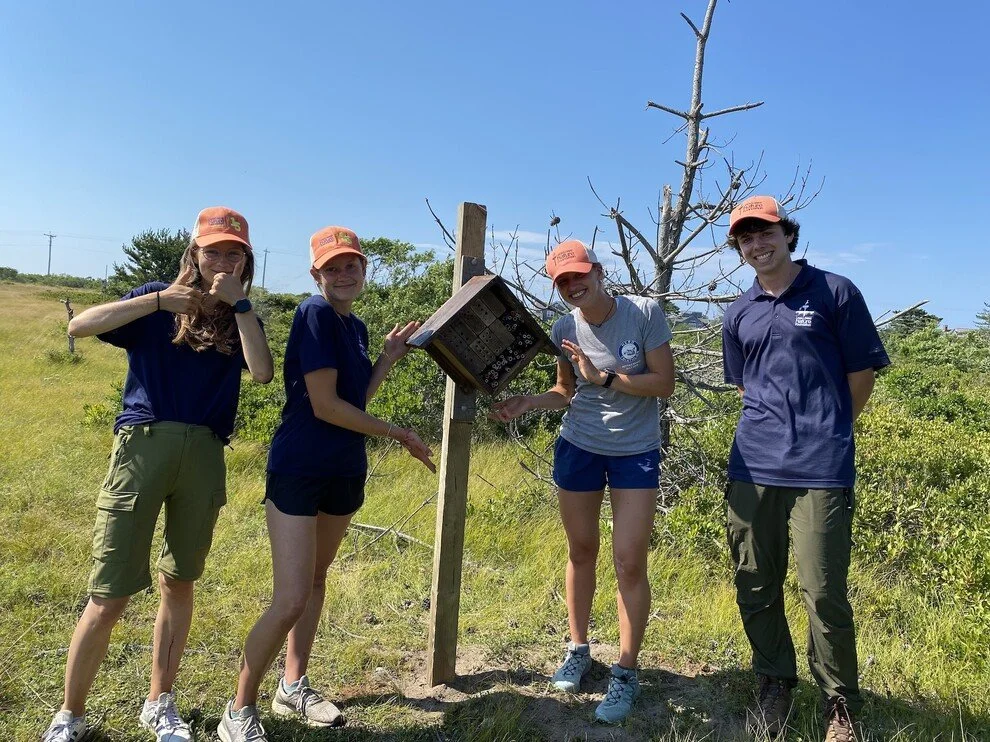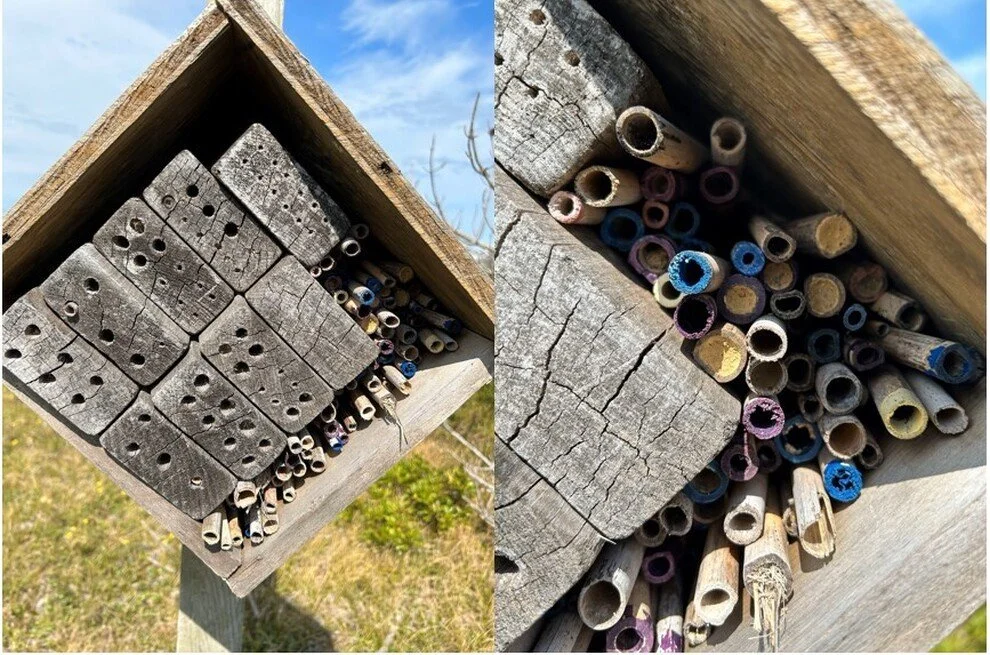Current Nature: Bee Hotels to Keep Your Pollinators Cozy
Libby Buck, Conservation Science & Land Steward at the Linda Loring Nature Foundation • Jan 22, 2024
LLNF’s Pollinator-Hideout creator with the installation team.
As winter sets in, have you ever wondered what happens to bees? Where do they seek refuge? Like any other wildlife or insect, bees face the challenge of surviving harsh conditions. Some bees, especially solitary ones, can survive winters using pollinator hideouts. These cozy retreats play a crucial role in ensuring the well-being of our buzzing friends during the colder months.
Did you know there are solitary and social bees? The majority of bee species are solitary, contributing significantly to the pollination of around 70% of flowering plants globally. Unlike social bees, solitary bees are more efficient pollinators, working under diverse weather conditions for longer periods. Native bees, especially important for quality pollination, need our attention and protection amid the impacts of climate change.
Solitary bees, unlike their social counterparts, nest independently. With about 30% nesting aerially and the rest in ground tunnels, female solitary bees establish nests, creating brood cells filled with nectar, pollen, and an egg. The nesting behavior of these bees offers insights into their diversity and behavioral patterns, potentially indicating the effects of climate change on their populations.
Winter is a tough time for solitary bees. With dropping temperatures and limited food sources, these industrious insects need to find ways to stay warm and nourished. Unlike humans, who can bundle up in warm clothes, bees have to rely on their surroundings to create a suitable environment for winter survival.
Close-up look at Pollinator-Hideout being used; notice the plugged-up holes.
The Pollinator-Hideout after a snowfall.
At the Linda Loring Nature Foundation, one of our volunteers, Tessa Husted, made it her mission to help out the solitary bees in need and created a Pollinator Hideout. A Pollinator Hideout is a specially designed space that provides shelter and protection for bees during the winter. These hideouts come in various forms, from simple garden structures to more elaborate bee hotels. The goal is to create a welcoming and safe space where bees can find a barrier against the biting winds and freezing temperatures.
Tessa added a personal touch to the project by using scrap wood and invasive plants that she found on Nantucket Island. She created tube-like structures for the bees using Phragmites, bamboo, and Japanese Knotweed stems. To attract different pollinator species, she made tubes of varying sizes, painted them in different colors, and created holes of varying depths. We are thrilled to report that the bees have taken up residence in our Pollinator Hideout for the winter and are actively using it. We can tell because they plug up the holes with mud and burrow themselves inside. Once inside the tubes, the bees go into a state of dormancy, in which they do not need to eat or drink. This allows them to survive the cold winter and then emerge again in the spring ready for action!
This was a simple and rewarding project that anyone could make. If you would like to see it in person, you can view it along our trails at the Linda Loring Nature Foundation. By understanding the importance of these hideouts and taking simple steps to create them, we can contribute to the well-being of these essential pollinators. You can also create a welcoming habitat for solitary bees to thrive during winter in your own backyard. Let's all play a part in ensuring the survival of these essential pollinators!
Stay tuned for more editions of Current Nature, a bi-weekly column featuring seasonal topics, natural history information, and advice on the outdoors from the staff at the Linda Loring Nature Foundation.



